Long-time readers of The PricePlow Blog will know that we're huge fans of Glaxon, a supplement industry newcomer launched in late 2019 that rapidly became known for extremely innovative formulas backed by the bleeding edge of nutritional and biochemical research.
No matter how many times something has been done before, Glaxon finds a way to do it better and more aggressively, while keeping it legally compliant. We recently analyzed their premium milk-based protein supplement, PROTOS Whey, whose scientific sophistication and elegance was simply mind-blowing.
PROTOS Whey looks incredible - but what if I'm dairy-free?
PROTOS Whey was such a nutraceutical tour de force that we were stoked to hear Glaxon had put their own spin on a dairy-free protein alongside it. Vegan protein is a complicated subject, and for those who follow the vegan diet, understanding it and implementing best practices is crucial for long-term success due to the common deficiencies that must be avoided.[1-6]
But vegan protein supplements aren't just for vegans: whey protein may dominate the market, but many omnivorous people are intolerant of dairy, or simply prefer not to eat it. For this market, quality protein options are as few and far between as they are for vegans - and it's always the sports nutrition market (often led by Glaxon) that finds ways to improve it.
Whether you're a vegan dieter or someone looking for a dairy-free alternative, take heart: in Glaxon PROTOS Vegan, your premium protein supplement has arrived.
In this article, we jump right to the solutions provided by Protos Vegan, including their new vegan-based Myo-Seq amino acid blend, as well as some amplification factor with Nutrition21's Velositol. But first, see our coupon-powered prices and get signed up for our Glaxon alerts, because they always have new surprises in store:
Glaxon Protos Vegan – Deals and Price Drop Alerts
Get Price Alerts
No spam, no scams.
Disclosure: PricePlow relies on pricing from stores with which we have a business relationship. We work hard to keep pricing current, but you may find a better offer.
Posts are sponsored in part by the retailers and/or brands listed on this page.
Our Protos Vegan Review from Episode #057
At the 20:30 mark in our 2021 Goon Day podcast with the Glaxon Team, we tested Protos Vegan:
Delicious flavors - a well-boosted dairy-free protein! Let's get into the ingredients:
How Glaxon PROTOS works – Pea and Watermelon Seed Proteins
The first thing you should note about Glaxon PROTOS Vegan is that it's based primarily on pea protein and pumpkin seed protein, both of which are among the few complete whole-food plant protein sources.[2,7] Although this protein blend will still be somewhat low in the essential amino acid methionine, but many argue that restricting methionine is potentially good for glucose control, general metabolic health, and longevity,[8-10] and may be one of the vegan diet's primary benefits for some – even though methionine is generally considered an "essential" amino acid.
As for the other 8 essential amino acids, they are all well represented here.
-
Pea takes on whey protein
Another thing to note about pea protein is that in terms of bioavailability and anabolic activity, it's one of the highest quality plant proteins available. In a randomized, placebo-controlled, double-blind study, people who took supplement pea protein gained approximately the same amount of muscle from resistance training as those who took whey protein.[11]
This result was replicated with a different type of training, high intensity functional training (HIFT),[12] which has a strength component but is more aerobic in nature than resistance training – think crossfit.
So the comparability of pea and whey protein seems to be a robust finding, and that's a big deal because whey protein is itself the "gold standard" of protein supplements. On the protein digestibility corrected amino acid score (PDCAAS), a scale that is used to measure the bioavailability of protein, whey scores a 1.00, which is the maximum score possible.[13]
The extremely high bioavailability and anabolic effect of whey protein are why it's the most common supplemental protein on the market by far – so it says a lot about pea protein, the main protein in PROTOS Vegan, that it performs as well as whey.
-
Pumpkin Seed and Watermelon Seed Protein
Like pea protein, pumpkin seed protein is an impressively bioavailable plant protein – in research studies it has proven to be on par with soy protein,[14] which is itself on par with whey protein,[13] the "gold standard" reference protein we were discussing above.
Watermelon seed protein is a relative newcomer to the protein supplementation game, but it wouldn't be a Glaxon product without some innovation. Like pea protein and pumpkin seed protein, watermelon seed protein has excellent amino acid composition and high bioavailability.[15,16] But it's really most often used to smooth out the powder's texture.
Basically what you need to know about these two proteins is that they're in the same league as pea protein, but with some texture benefits. In light of the discussion regarding pea protein above, this should come as reassuring information.
-
The Velositol edge
Glaxon starts the right way by selecting the highest quality plant protein they can, but the addition of Velositol makes this supplement even better. For some reason, we don't always see this in vegan proteins, but we think we should. As a complex of the mineral chromium and the starch amylopectin, Velositol is designed to increase muscle synthesis by modulating insulin activity,[17] which increases the efficiency of the body's protein utilization.
Made by Nutrition 21, the experts in Chromium and Insulin management, Velositol can boost Muscle Protein Synthesis by using chromium and a 'tickle' of insulin-spike from amylopectin!
This patented chromium-amylopectin complex was put to the test in a 2017 study where the combination of Velositol and whey protein was put to the test against whey protein alone. At the end of the study, researchers found that the group of subjects taking the velositol and whey combination had gained significantly more muscle than the group that took only whey.[18] One thing to note about this study is that the dose of protein used was significantly smaller than what's present in Glaxon PROTOS Vegan, and yet the effect of Velositol on protein bioavailability was still large enough to be detected.
Additional studies using larger doses of protein showed the same effect,[19] in part because Velositol increases the levels of musclin in the body. That's important because musclin initiates the process of muscle synthesis.[20]
A double-blind, randomized, placebo-controlled study – the highest quality type of study design – showed that when Velositol is given with just 15 grams of whey protein, it significantly increased the squat reps, jump power, and jump height of the research subjects.[21,22]
The one thing we want to note is that it doesn't have published data in combination with vegan proteins, but if it works for whey, we're confident it'll work similarly if not better for pea blends.
Velositol takes a high quality protein supplement and makes it even better – so you can rest assured that with Glaxon PROTOS Vegan, you are getting at least as much bang for your buck as you would with a premium whey supplement.
-
Protease Enzyme Blend 87,500 HUT (as ProHydrolase)
As we mentioned above, one concern with the bioavailability of plant proteins is that whole-food plant protein sources contain a lot of anti-nutrients, including compounds that inhibit the action of naturally-occurring human digestive enzymes.[23]
This chart is from a preclinical study,[19] using ascending amounts of protein - and the results ascend as well!
Thus, it makes perfect sense for a plant-based protein supplement to contain some exogenous enzymes to help increase the bioavailability of that protein.
That's where ProHydrolase comes in. It's a complex of digestive enzymes that hydrolyze the bonds between protein molecules, thus rendering the kind of complex proteins you'd find in pea, pumpkin seeds, and watermelon seeds simpler, easier to digest, and more bioavailable.[24]
It might sound weird, but supplemental enzymes have been used for a long time in modern medicine, which recognizes them for their ability to alleviate the symptoms of gastrointestinal disease.[25] Even for healthy people, increasing the efficiency of the digestive process can potentially lead to a higher subjective sense of well-being, as energy that is normally used on digestion gets freed up for other purposes.
-
Myo-Seq (Sequenced Vegan Amino Acid Blend) - 5000 mg
When Glaxon created Myo-Seq, the idea was to mimic the protein composition of human muscle tissue. The reasoning behind this is that if you give your body the components of muscle in their naturally-occurring ratios, it will synthesize new muscle more efficiently.
Myo-Seq includes:
- Glutamic Acid
- Leucine
- Lysine
- Isoleucine
- Threonine
- Arginine
- Aspartic Acid
- Alanine
- Valine
- Tyrosine
- Phenylalanine
- Serine
- Methionine
- Glutamine
- Glycine
- Proline
- Asparagine
- Histidine
- Tryptophan
- Cysteine
In other words, ALL of the 20 amino acids that constitute protein in all living things.
Context: The History of Myo-Seq
Glaxon Xeno Amino V3 takes hydration and intra workout / recovery amino acid sequences to the next generation
Myo-Seq was first conceived as a response to branched-chain amino acid (BCAA) supplements, which were and are very popular with athletes of all kinds, including weightlifters. But BCAAs only contain leucine, isoleucine, and valine – three aminos that have been shown to initiate muscle synthesis. There are also EAA supplements with all nine essential amino acids, but when Glaxon produced their intra workout supplement Xeno Amino, they wanted even more.
This is because Glaxon knew that although BCAAs are effective, they're not maximally effective. While BCAAs are good for managing fatigue and preventing catabolism,[26-31] especially during fasted training, they don't quite push you into the anabolic state of muscle growth.
This realization came from studies on supplemental proteins containing all nine essential amino acids – defined as the amino acids your body cannot produce on its own, and must obtain from food or supplements – of which the BCAAs are only three. It turns out that supplementing with all nine significantly outperforms supplementing with just BCAAs,[32,33] which is not very surprising if you think about it.
Whereas the BCAAs were basically just anti-catabolic, supplementing with the nine essential amino acids proved to be pro-anabolic. But leave it to Glaxon to take it further.
Myo-Seq: the next evolutionary step in essential amino supplementation
After looking at the research on essential amino supplementation, formulator Joey Savage and the team decided to take things to the next level, with a blend of every single essential and non-essential amino acid known to science. The biological reasoning behind including the non-essential amino acids is that although the body is capable of producing them itself, the body is usually inefficient when it makes anything for itself, meaning that obtaining even non-essential nutrients from food or supplements can still maximize the efficiency of your metabolism.
One of the things we love about Myo-Seq is that it contains appropriate ratios of amino acids such as serine, glycine, and proline, which are needed to balance other aminos like methionine. These aminos, which naturally occur in gelatinous and collagenous cuts of animal meat, are under-represented in the American diet – a big problem, because having too high a ratio of methionine to glycine can push the human metabolism into a state of profound stress,[34] causing all kinds of downstream health problems.
In the words of Raymond Peat, Ph.D.,
"When only the muscle meats are eaten, the amino acid balance entering our blood stream is the same as that produced by extreme stress, when cortisol excess causes our muscles to be broken down to provide energy and material for repair. The formation of serotonin is increased by the excess tryptophan in muscle, and serotonin stimulates the formation of more cortisol, while the tryptophan itself, along with the excess muscle-derived cysteine, suppresses the thyroid function... A generous supply of glycine/gelatin, against a balanced background of amino acids, has a great variety of antistress actions."[34]
--Dr. Ray Peat
A "balanced background of amino acids" is exactly what Glaxon was going for with Myo-Seq.
Short of drinking a bone-marrow-and-organ-meat smoothie or adding a gelatin supplement to your diet, taking a supplement containing Myo-Seq is your best option. The above is also why we continually tell meat-eaters to also eat meat off the bone and skin, which is high in some of these additional aminos mentioned above.
And if you're wondering, don't worry – the Myo-Seq blend in this product is sourced from vegan protein.
-
A word about B vitamins
Aside from protein, the other significant issue for vegans is the challenge of getting enough B vitamins from plant foods, folate and B-12 in particular.
For the folate source in Glaxon PROTOS Vegan, Glaxon made the extremely wise choice of using the L-5-methyltetrahydrofolate (5-MTHF) form (as Arcofolin) instead of plain folic acid, which is cheaper and much more common.
5-MTHF FTW
The problem with folic acid supplementation is that its bioavailability is contingent upon the activity of the methylenetetrahydrofolate reductase (MTHFR) enzyme that converts it to 5-MTHF, which is the active form.[35] In some people, the activity of this enzyme is reduced due to their genetics,[36,37] making their absorption of folate from folic acid very poor, and potentially leading to folate deficiencies and serious health issues even in the presence of folic acid. Supplementing directly with 5-MTHF side steps this potential problem.
Since eggs and liver are among the best sources of folate in the American diet,[38] and are both (literally) off the table for vegans, having some kind of supplemental folate is a great idea for anyone following a vegan diet.
Deficiencies in folate are not fun at all, and should be avoided at all costs – being deficient in folate significantly raises your risk of arteriosclerosis and heart attack (both related to elevated levels of homocysteine caused by lack of folate), and most infamously, neural tube defects in the fetuses of pregnant women with a folate deficiency.[39]
With 80% of folate's recommended daily intake per serving, Glaxon PROTOS Vegan can go a long way towards helping you get enough folate. Just make sure you're accounting for that last 20% in your diet and beyond.
Vitamin B12 as well
As for vitamin B12, the vast majority of vegans are probably familiar with it already – but for those who are new to the vegan world, you should know that deficiency in B12 raises your risk of anemia, cognitive impairment, depression, neurological issues, and, like folate, elevated levels of homocysteine with the multitude of cardiovascular issues that can cause.[40]
As a group, vegans are at one of the highest risks for B12 deficiency,[40] so special care must be taken by any vegan to prevent this.
It's important to note that although Glaxon has used the superior form of B12, methylcobalamin, it's still only 20% of the daily recommended intake for B12, so you shouldn't rely on this supplement to cover your B12 needs.
-
Iron
Another concern with plant-based diets is the lack of bioavailable iron. Research has shown that people following vegetarian or vegan diets are at a significantly higher risk for iron deficiency, because heme iron, the most bioavailable form, is difficult to obtain without eating meat.[41]
One reason why pea protein and pumpkin seed protein are ideal as the basis for a plant-based protein supplement is they're both relatively high in iron[42,43] – and pea protein actually boosts your body's absorption of iron from other sources, too.[44] but since this is plant-derived iron at the end of the day, it still isn't heme iron,[45] which is what you really want. If you are eating a vegan diet, you may wish to consider extra iron supplementation on top of Glaxon PROTOS Vegan.
-
Note the Sweeteners
One thing to note is that Glaxon is using sucralose and acesulfame potassium ("ace-K") here to sweeten PROTOS Vegan. As synthetic sweeteners, this means that the product is vegan but not completely "plant-based". For nearly all consumers in the sports nutrition niche where Glaxon resides, this is completely fine, and other popular brands do it because they do taste better than natural alternatives.
Flavors Available
Before we dig into the "macro wars" and further discuss protein bioavailability, let's take a look at the flavors Glaxon has put these ingredients into:
So, why are we here in the first place? This should be well-known at this point, since good health starts with protein consumption:
Protein: a resolution to the "macro wars"
If you've been in the health and nutrition world for any length of time, you'll know all about the so-called "macro wars" that have been raging for decades. The basic divide is between those who advocate for a high-carb, low-fat diet, or a high-fat, low-carb diet – the middle ground is increasingly thin.
But fortunately for those of us who have endured so many unending arguments about carbs and fat, a broad consensus is coming into view:
It's all about protein!
The latest research is clear: a high-protein diet is the best macronutrient profile for staying lean, strong, and metabolically healthy.[46-50] Different ratios of carbs and fats seem to work more or less equally well, so long as protein intake is high.
A big part of its success is from the thermogenic effect of food, the amount of energy our body spends on digesting what we eat: protein has a significantly larger thermogenic effect than either carbs or fats,[48] helping keep our net caloric intake in a favorable range, and thus, maintain a healthy weight.[48]
But what does "protein" mean?
After all, there are many different whole-food sources of protein, and each of these has its own quality and bioavailability – we absorb and use more of the protein we eat from certain foods than we do from other foods. The bioavailability of the protein we eat is a key determinant of our body's rate of muscle synthesis.[48]
And as for quality, we need to eat amino acids in specific ratios for optimal health, making some protein sources are more complete or balanced than others.[51]
Protein bioavailability issues in vegan diets
Although a vegan diet can be done well, it must be done intentionally. Certain pitfalls must be consciously avoided. The main problem is that generally speaking, plant protein is of a lower quality and bioavailability than animal protein.[52] This is why it's so nice to have ingredients like Velositol and ProHydrolase added here.
In developing countries whose major protein sources are typically unrefined cereal grains and legumes, the traditional diet shows protein bioavailability levels as low as 54%.[23] This is largely due to the presence of anti-nutrients in unrefined grains and legumes, key examples being phytic acid, which binds to nutrients in the gut before they can be absorbed, and compounds that inhibit key digestive enzymes like protease and trypsin.[23]

We've been waiting two years to see how Glaxon would "Glaxonify" a protein powder. Their humanized PROTOS Whey does not disappoint.
The upshot is that if you're getting all your protein from plant sources, you will need to consume about 25% more total protein than somebody who's eating an omnivorous diet.[53]
Specifically, you will need to eat at least 1 gram of protein per kilogram of body weight, instead of 0.8 grams. For a 150 pound person, this works out to 68 grams of protein per day, instead of 54.
Not a huge difference – but those are minimum requirements. If your goal is to build muscle and maintain a lean body composition, you should know that for optimal protein synthesis while following a resistance training program such as weight lifting, the recommended protein intake is doubled to about 1.7 grams per kg per day.[1]
For a 150 pound person lifting weights and eating an omnivorous diet, that works out to about 116 grams of protein per day. Many do far more.
But if you're eating a vegan diet, we need to make the 25% correction we discussed above – meaning that for vegan athletes, a protein intake of about 145 grams per day is optimal.
In other words, if you're a vegan athlete, you need to eat almost 30 grams more protein per day than an omnivorous or carnivorous athlete. A 30 gram difference is nothing to sneeze at, especially for ectomorph "hard gainers" who often struggle to eat enough under the best of circumstances.
And unfortunately, although protein is the most important macronutrient to eat in adequate amounts, it can also be the hardest, because it's the most satiating.[54]
Protein completeness issues in vegan diets
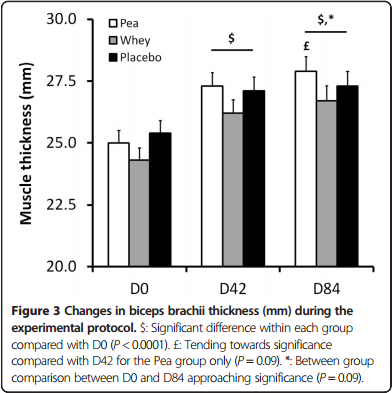
Pea Protein and Whey Protein were both significantly better than placebo (not surprising), but not significantly different from each other.[11]
Yet it can't just be any protein: it needs to be complete protein. By "complete", we mean that the protein source that contains all nine essential amino acids – a deficiency in any of which can interfere with muscle synthesis.[55]
Whole-food animal proteins are almost always complete,[13] but the completeness of plant proteins varies considerably.[13]
Thus, it is crucial for anyone following a vegan diet to choose their protein sources carefully: you must either eat the few plant proteins that are naturally complete, or combine various incomplete plant proteins to get the full amino acid complement.[13]
Complicated enough for you?
By now, you can see how eating a vegan diet brings unique and nuanced problems to your nutritional strategy.
Those problems are exactly what premium vegan protein supplements like Glaxon PROTOS are designed to solve.
Conclusion: Amplify your vegan / dairy-free protein
We hope that instead of feeling overwhelmed, our vegan athletes come away from this article with greater confidence that they can adhere to their preferred diet without sacrificing anabolic potential or athlete performance. Nevertheless, it should be clear from the preceding discussion that certain challenges do exist, and must be managed carefully.
For the vegan athlete, supplemental protein is highly recommended. One of the big advantages of protein supplementation for the vegan athlete is that the manufacture of plant protein isolates will strip away most of the "anti-nutritional" compounds that interfere with protein bioavailability, which we discussed above, meaning that protein bioavailability of vegan protein supplements will be much closer than whole plant foods to what you'd expect in animal products.
Because of this, there is probably a clearer case for vegan athletes to take supplemental protein than there is for anyone else.
Vegan athletes stand to benefit uniquely from protein supplements, and we think Glaxon's PROTOS Vegan is a uniquely awesome product for this need. Between the careful selection of awesome protein sources, and the inclusion of Velositol and supplementary enzymes to push the bioavailability of those proteins even higher – to say nothing of Myo-Seq for helping achieve optimal amino balance – we think this is a totally awesome supplement formula.
Glaxon Protos Vegan – Deals and Price Drop Alerts
Get Price Alerts
No spam, no scams.
Disclosure: PricePlow relies on pricing from stores with which we have a business relationship. We work hard to keep pricing current, but you may find a better offer.
Posts are sponsored in part by the retailers and/or brands listed on this page.

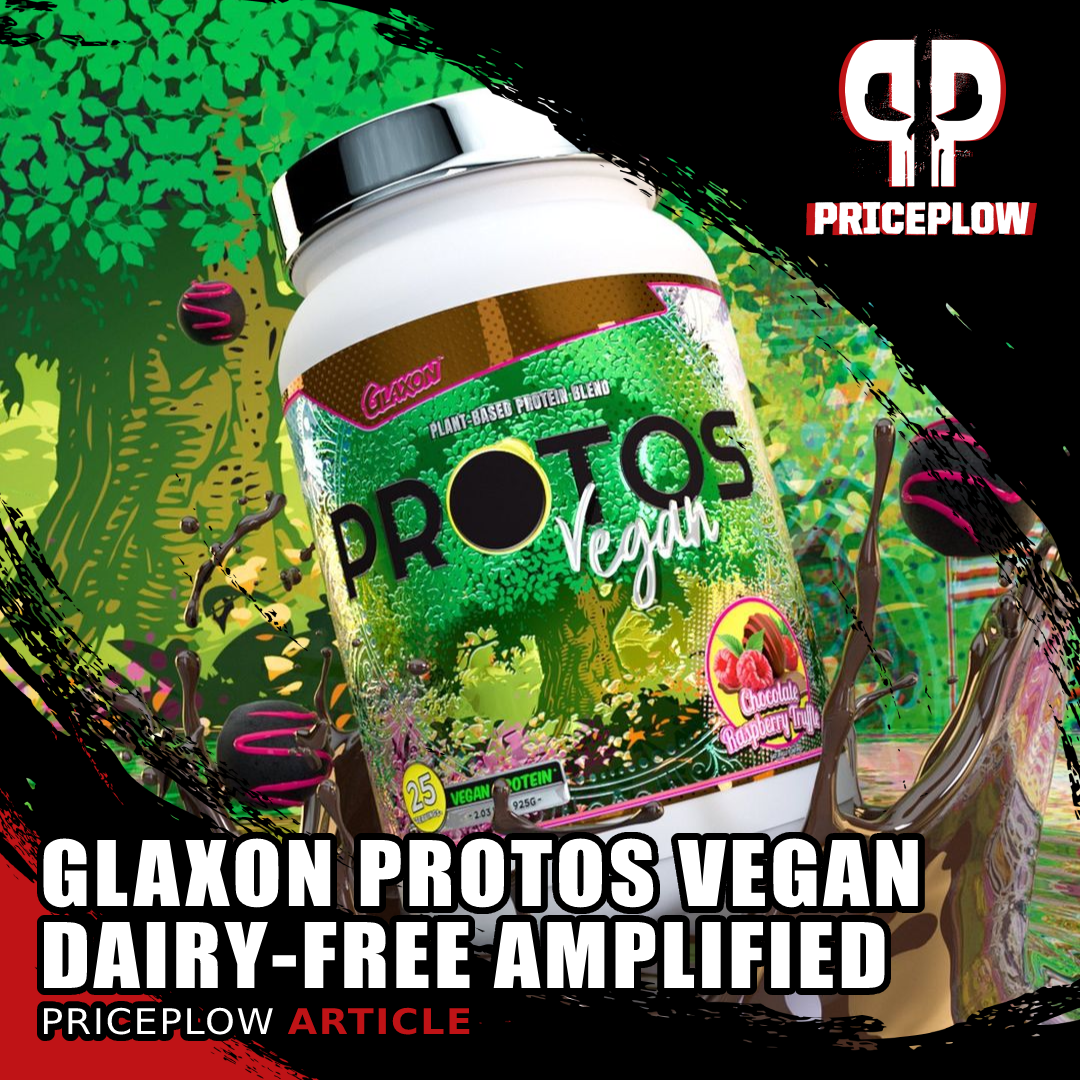
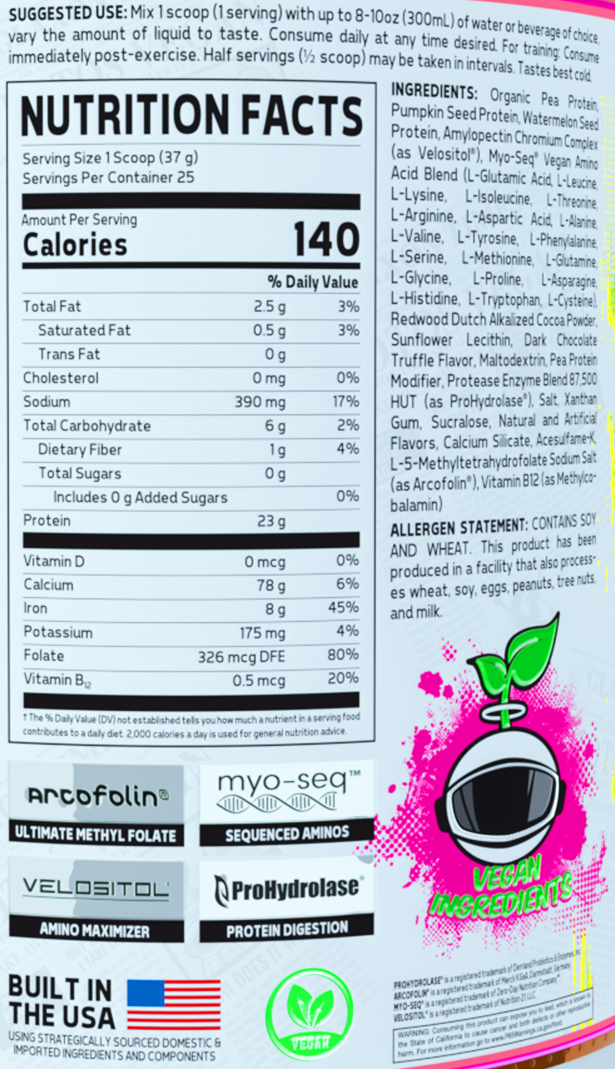
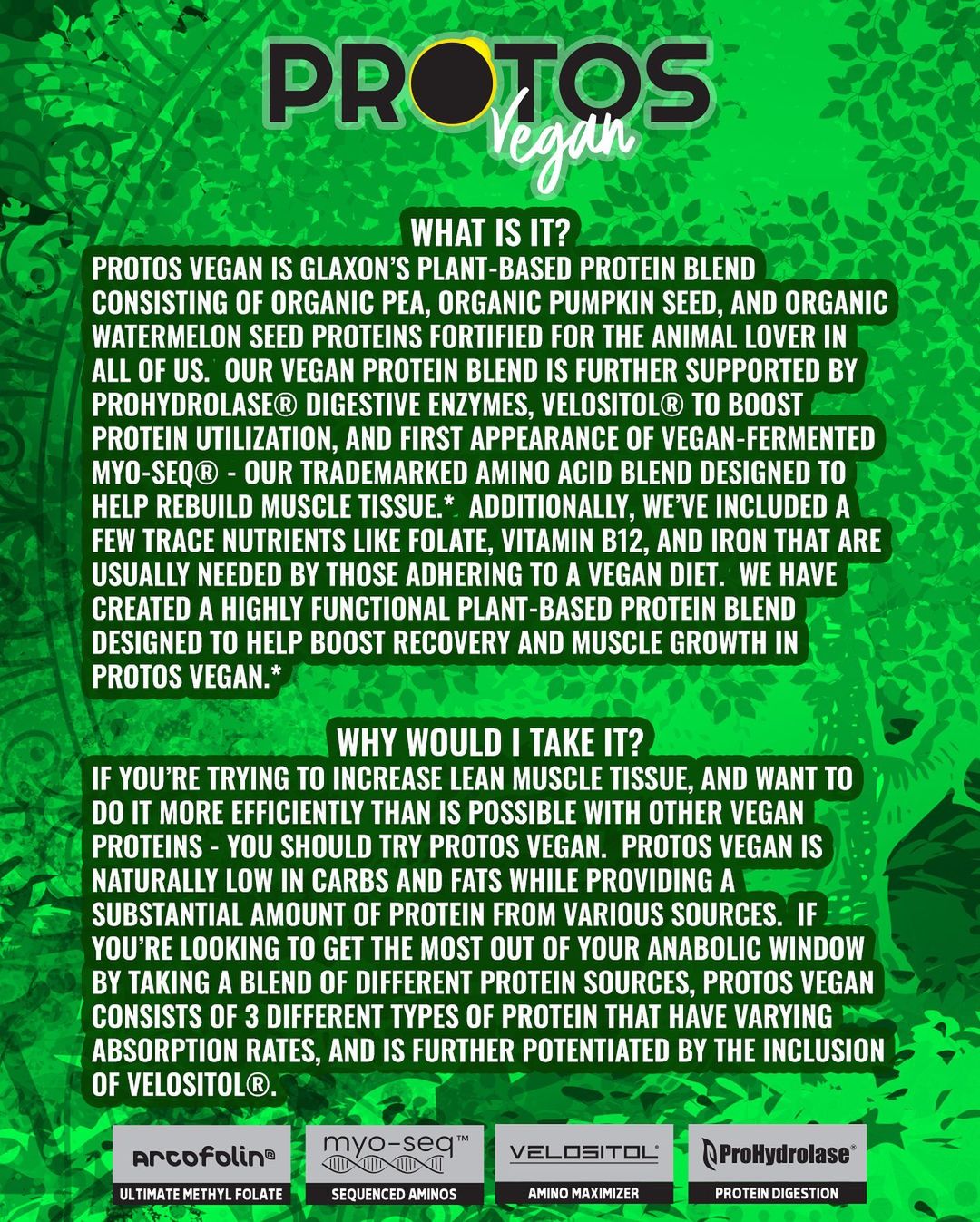
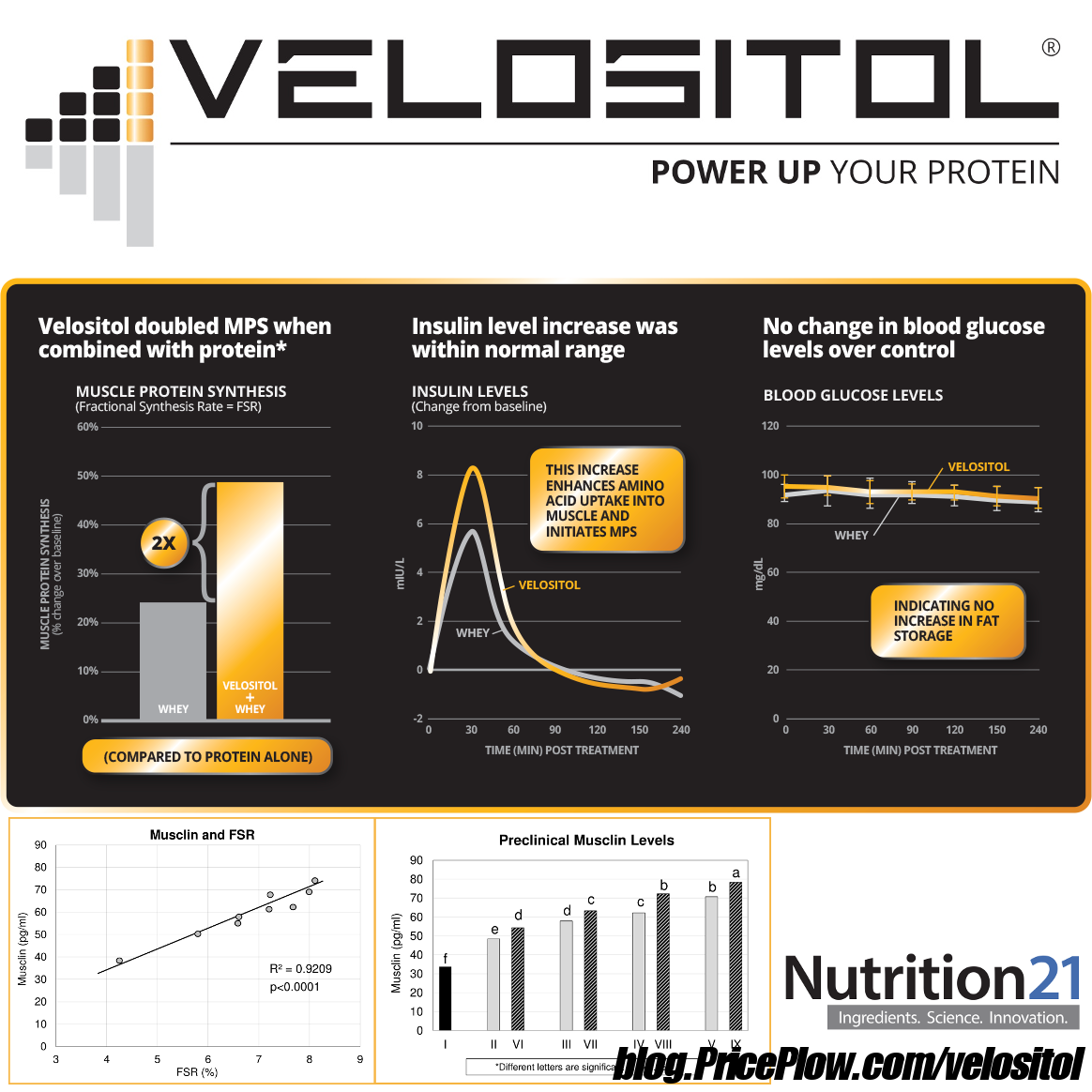
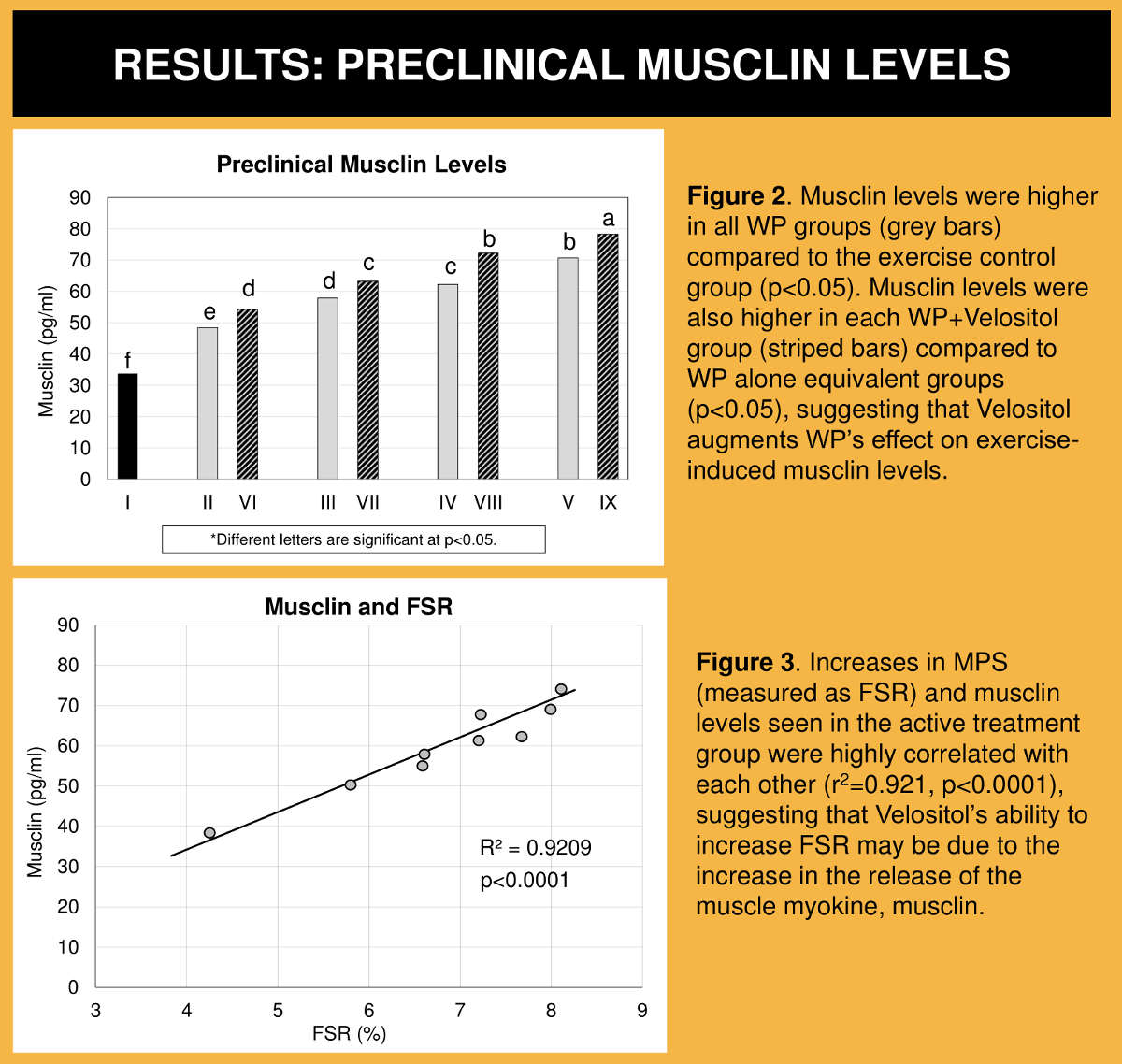
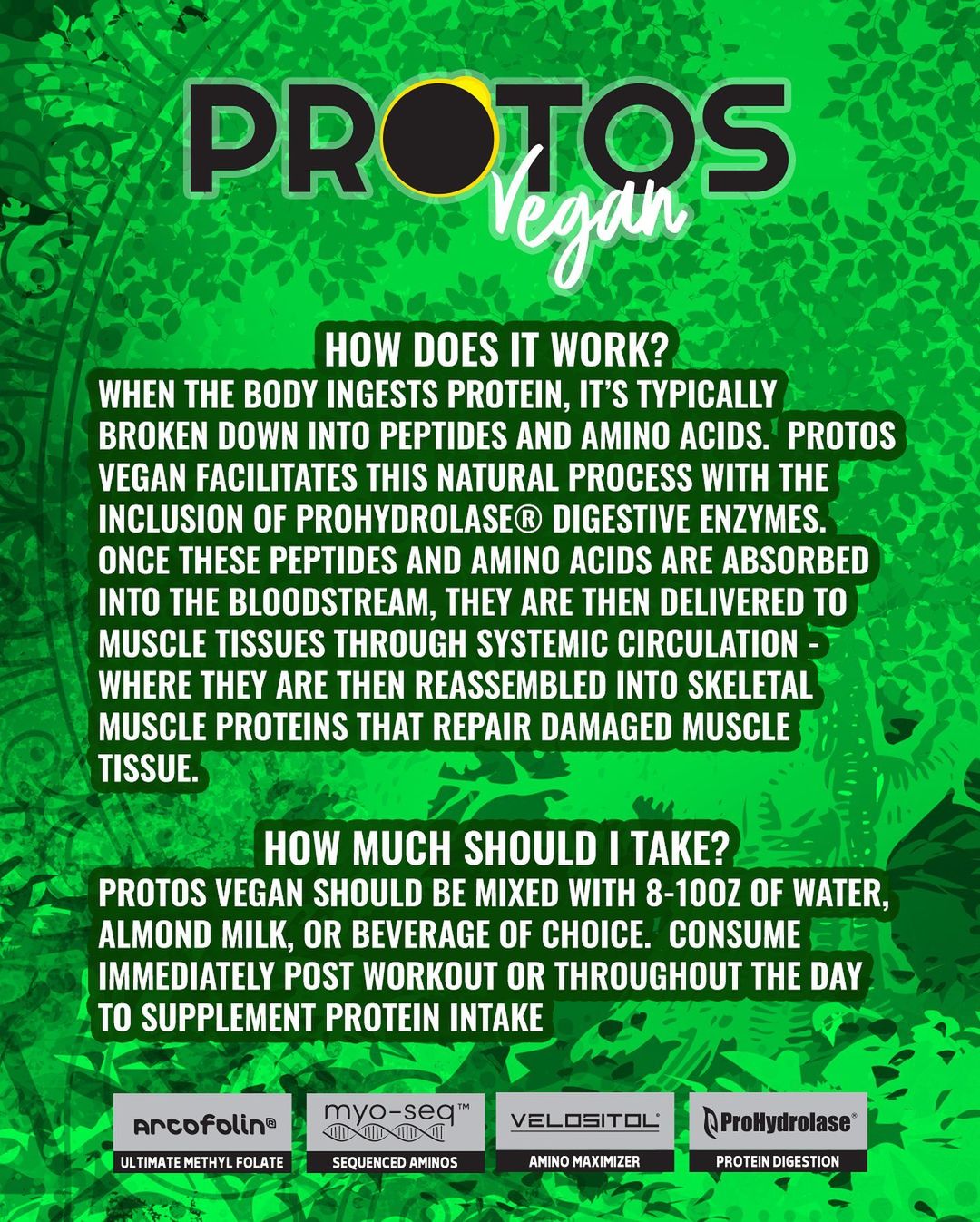
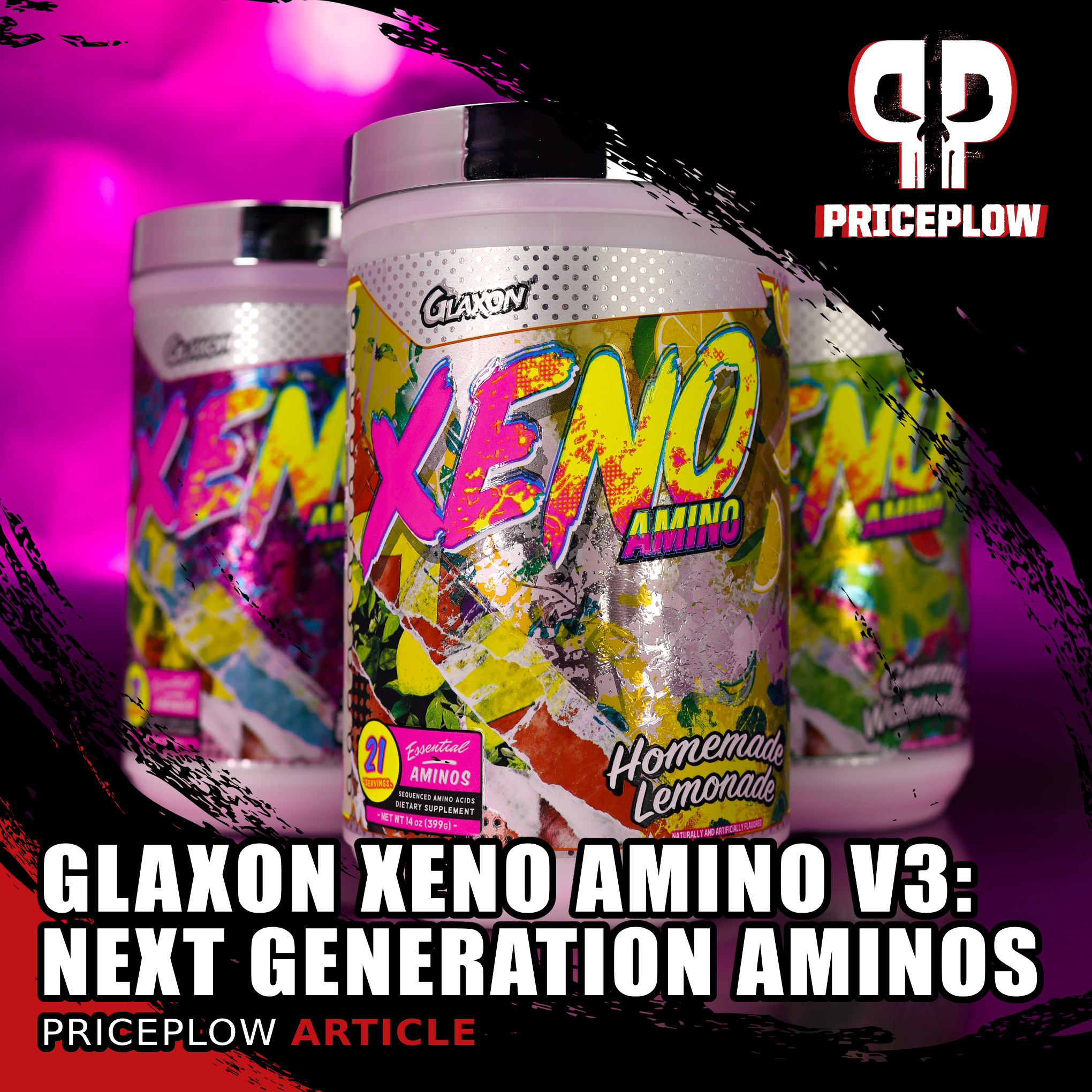
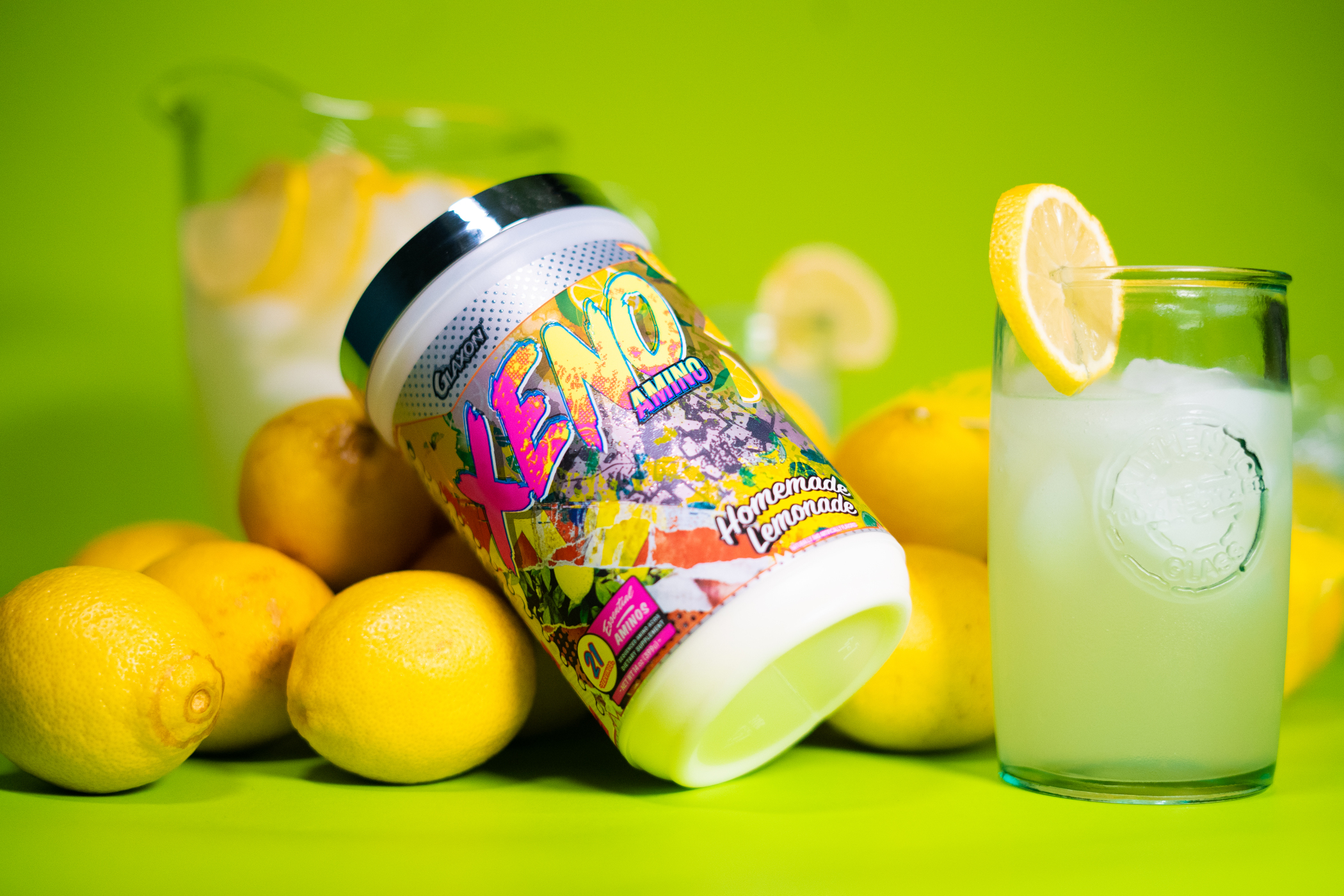
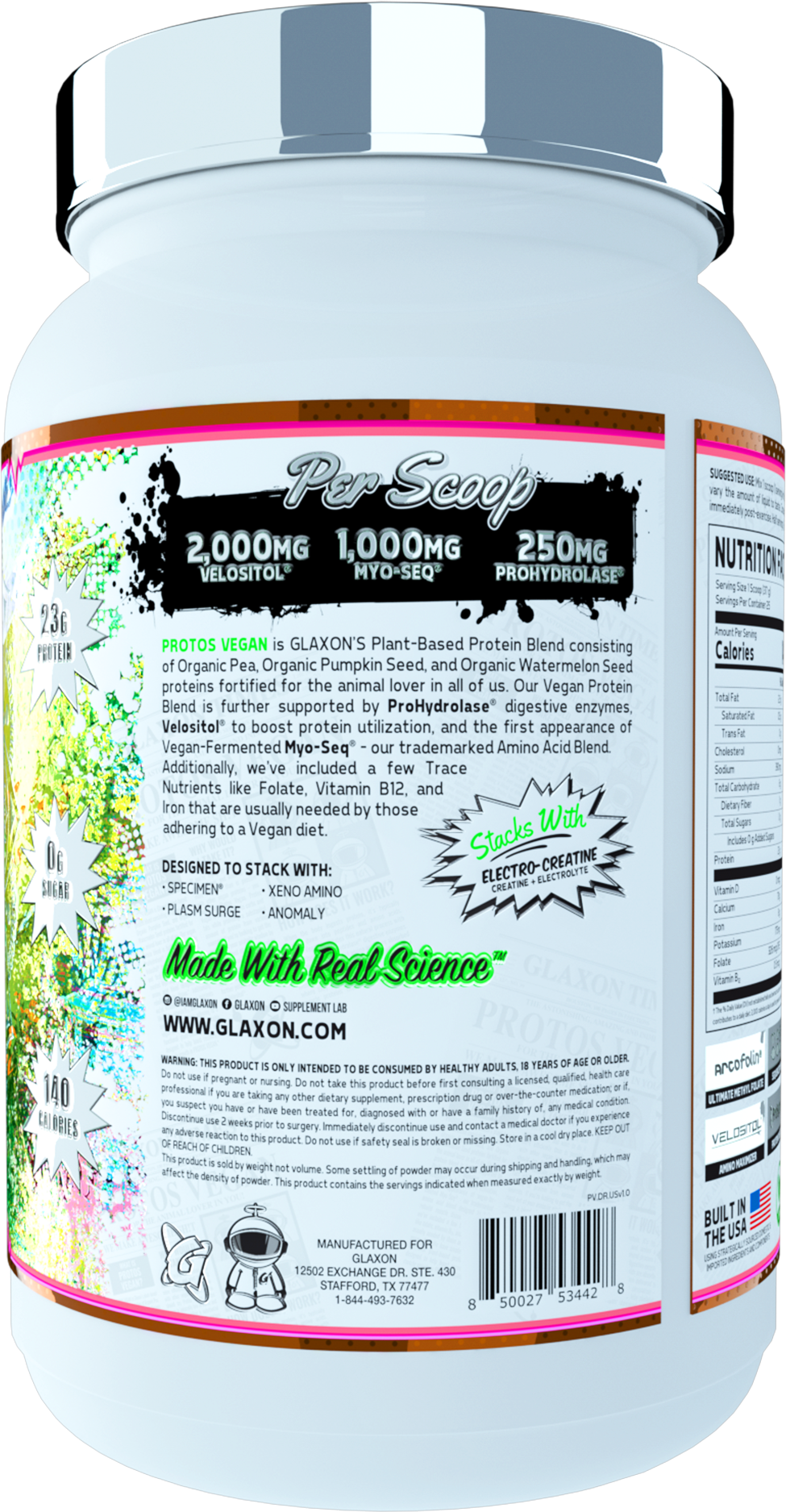
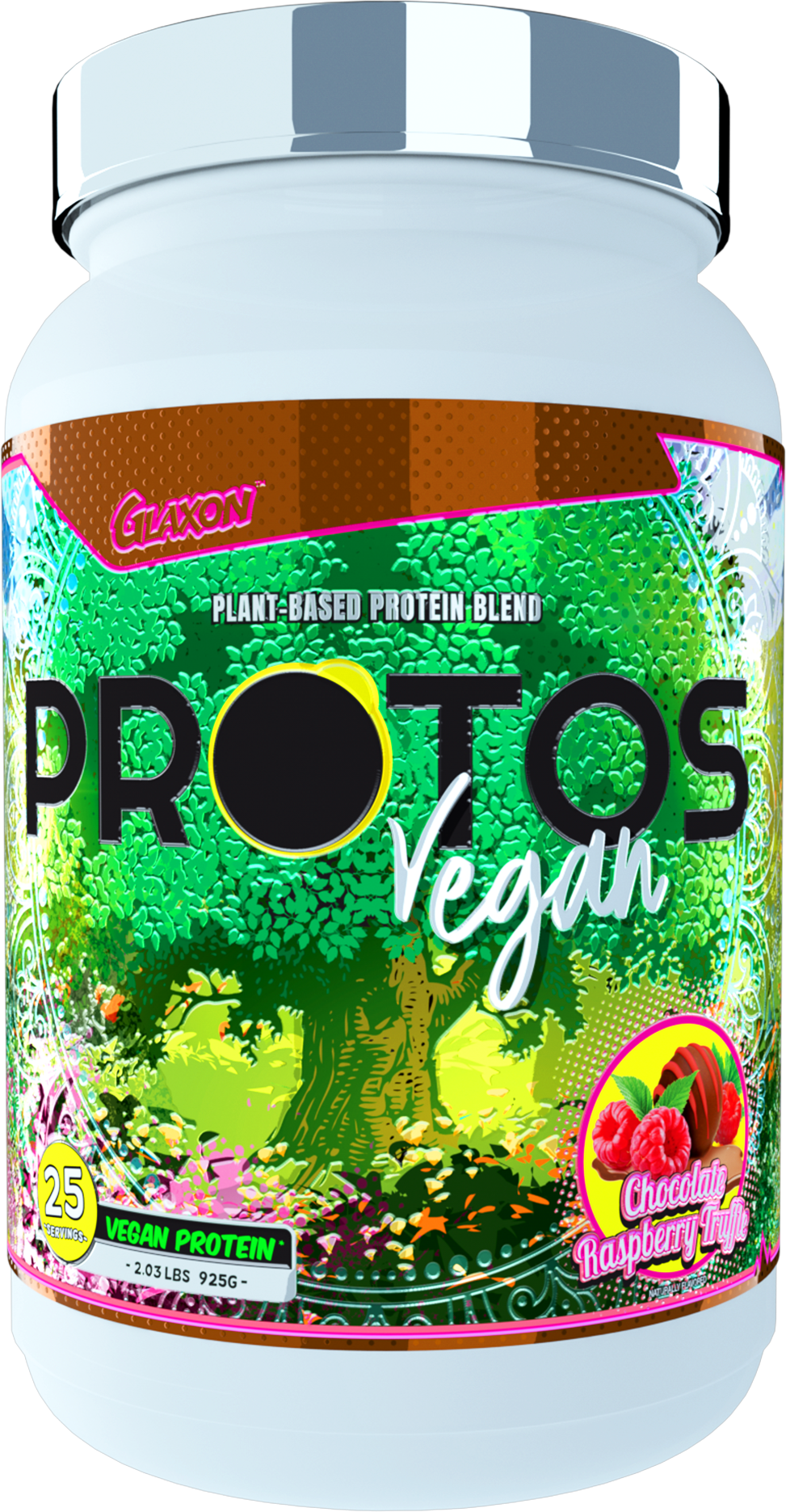
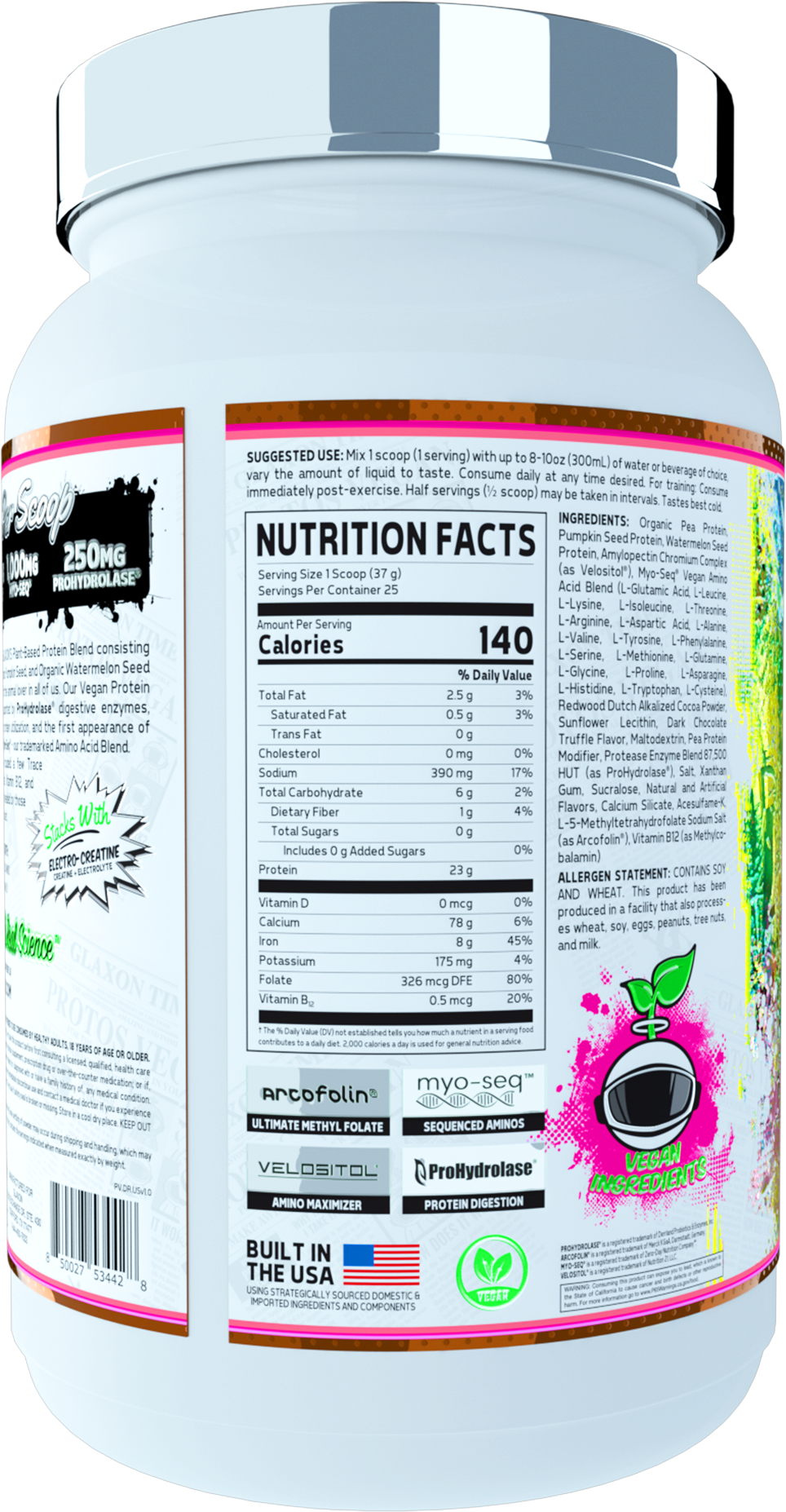
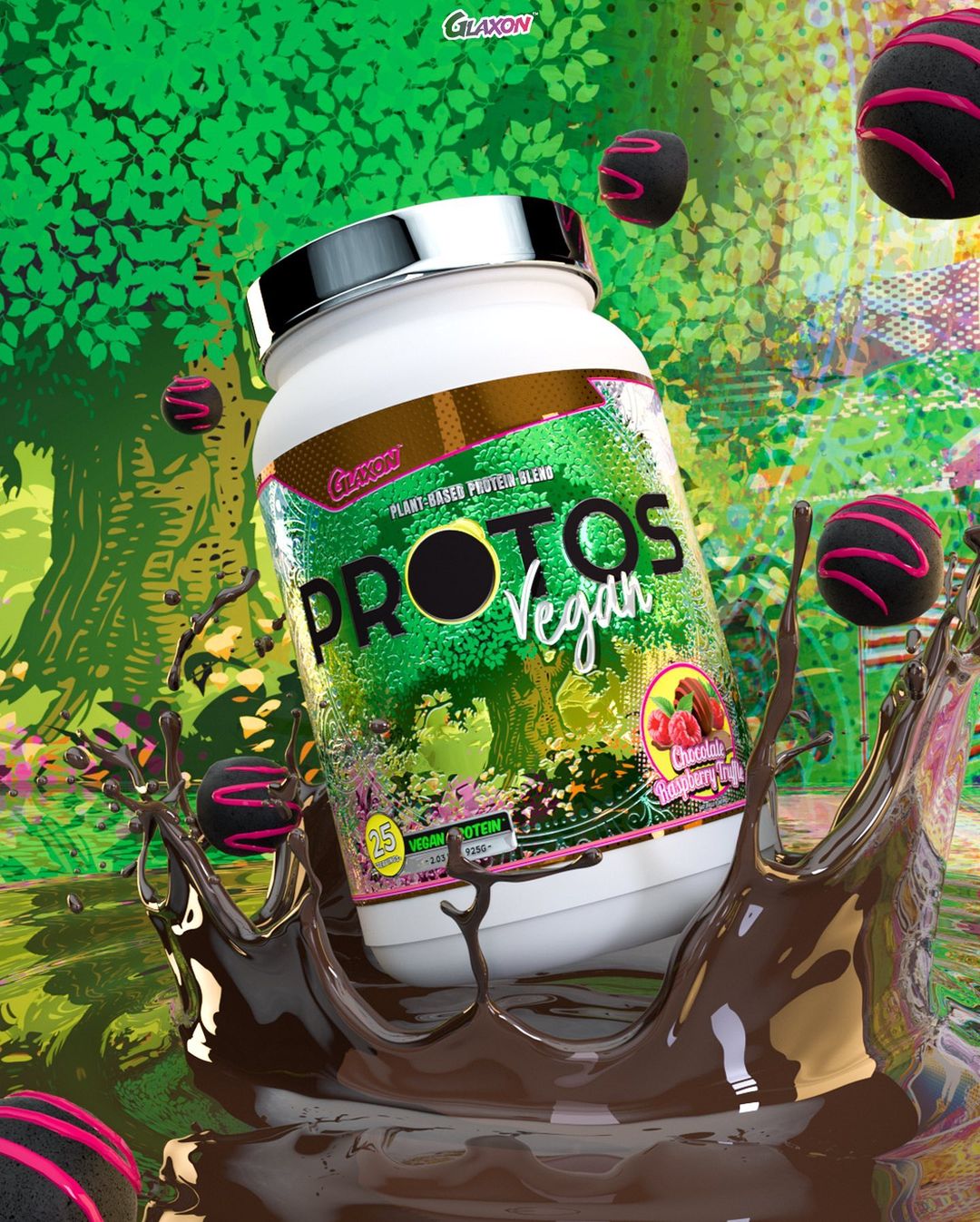


Comments and Discussion (Powered by the PricePlow Forum)